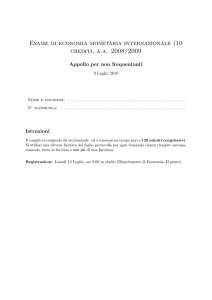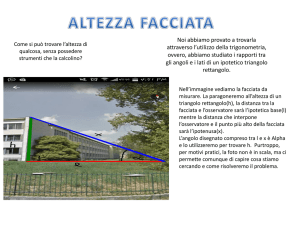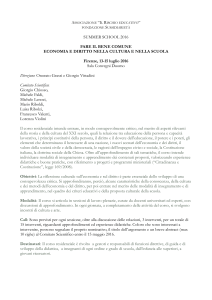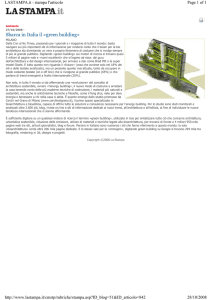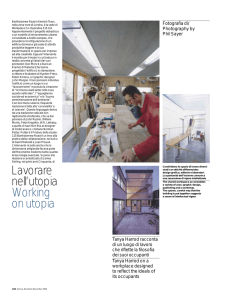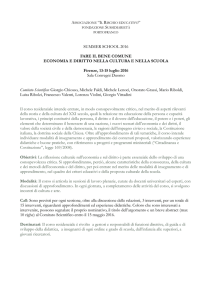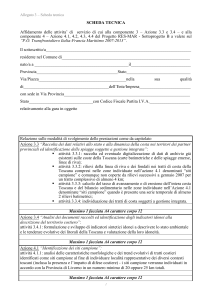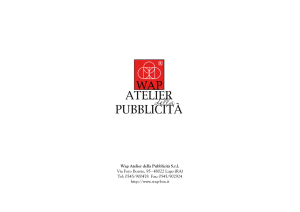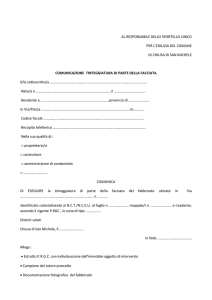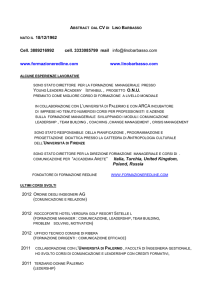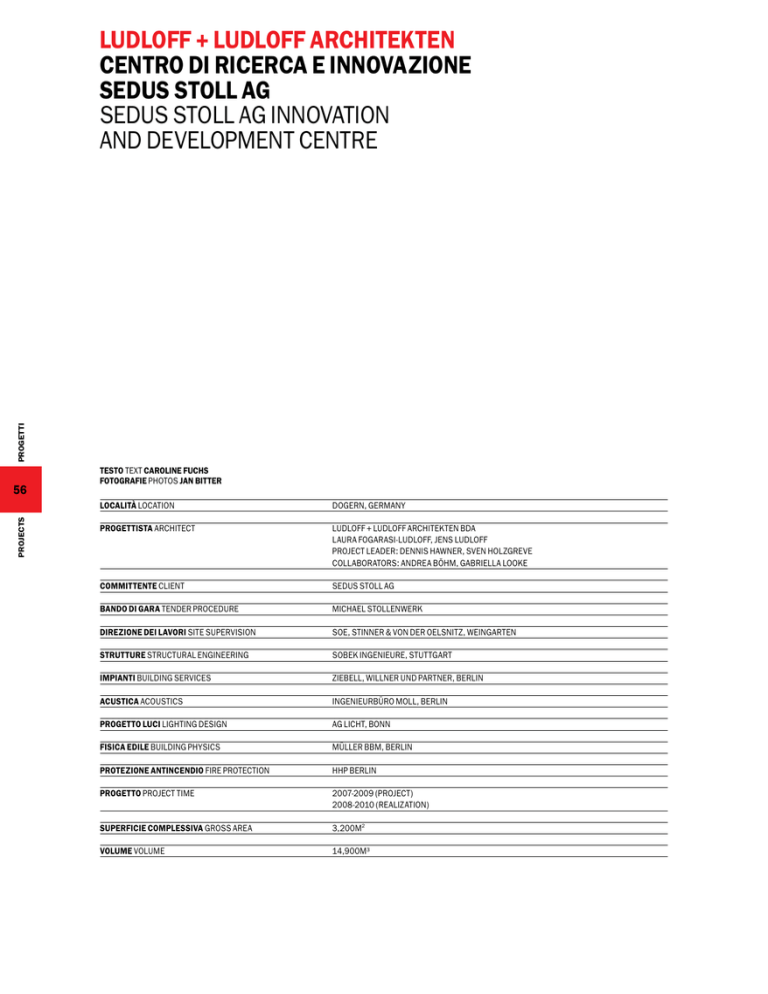
PROGETTI
LUDLOFF + LUDLOFF ARCHITEKTEN
CENTRO DI RICERCA E INNOVAZIONE
SEDUS STOLL AG
SEDUS STOLL AG INNOVATION
AND DEVELOPMENT CENTRE
56
TESTO TEXT CAROLINE FUCHS
FOTOGRAFIE PHOTOS JAN BITTER
PROJECTS
LOCALITÀ LOCATION DOGERN, GERMANY
PROGETTISTA ARCHITECT
ludloff + ludloff Architekten BDA
Laura Fogarasi-Ludloff, Jens Ludloff
PROJECT LEADER: Dennis Hawner, Sven Holzgreve
COLLABORATORS: Andrea Böhm, Gabriella Looke
COMMITTENTE CLIENT
Sedus Stoll AG
BANDO DI GARA TENDER PROCEDURE
MICHAEL STOLLENWERK
DIREZIONE DEI LAVORI SITE SUPERVISION
SOE, STINNER & VON DER OELSNITZ, WEINGARTEN
STRUTTURE STRUCTURAL ENGINEERING
SOBEK INGENIEURE, STUTTGART
IMPIANTI BUILDING SERVICES
ZIEBELL, WILLNER UND PARTNER, BERLIN
ACUSTICA ACOUSTICS
INGENIEURBÜRO MOLL, BERLIN
PROGETTO LUCI LIGHTING DESIGN
AG LICHT, BONN
FISICA EDILE BUILDING PHYSICS
MÜLLER BBM, BERLIN
PROTEZIONE ANTINCENDIO FIRE PROTECTION
HHP BERLIN
PROGETTO PROJECT TIME
2007-2009 (PROJECT)
2008-2010 (REALIZATION)
SUPERFICIE COMPLESSIVA GROSS AREA 3,200M2
VOLUME VOLUME 14,900M³
1
JAN BITTER
DAVID FRANCK
1
Le zone industriali solitamente non sono il luogo
prediletto per la realizzazione di architetture
di qualità. Non lontano dal famoso campus Vitra
a Weil am Rhein, però, l’insediamento produttivo
della Sedus Stoll, azienda produttrice di mobili
per ufficio, si distingue per l’ambizione
architettonica dimostrata negli edifici che lo
compongono. La sede della Sedus Stoll AG, situata
nell’area industriale ai margini del centro abitato di
Dogern nella zona dell’Alto Reno, attira l’attenzione
già da lontano grazie all’iconica facciata pixelata
del magazzino (realizzato nel 2004 su progetto di
Sauerbruch Hutton): un landmark industriale molto
efficace anche ai fini della “corporate identity”
dell’azienda.
Dal 2010 il campus può vantare un’altra attrazione
architettonica meno vistosa, sia per le dimensioni
che per il carattere decisamente introverso,
ma altrettanto fascinosa. Una scatola bianca
leggermente contorta poggiata su un tappeto
verde e avvolta da teli bianchi; ecco che l’oggetto
architettonico suggerisce un indizio della sua
realtà interiore: il centro di ricerca e di innovazione,
concepito dallo studio berlinese ludloff + ludloff,
che ospita gli spazi per lo sviluppo, la progettazione
e la fabbricazione di prototipi dell’azienda Sedus e
custodisce la fase più segreta dell’iter produttivo.
L’involucro è costituito da elementi trapezoidali
rivestiti di membrana tessile in fibra di vetro
spalmata in silicone, disposti lungo due piani
distanziati dall’edificio. In corrispondenza delle
finestre lo stesso rivestimento assume la funzione
di tenda avvolgibile che dona un differente ritmo
alla facciata secondo il suo grado di apertura.
Mentre la superficie esterna ha il colore biancastro
del materiale, l’interno è stampato di grigio chiaro
al fine di attenuare possibili fenomeni abbaglianti.
Una sorta di sottoveste in membrana poliacrilica
tinta di grigio-bluastro è tesa direttamente
sull’estradosso del corpo architettonico per
proteggere le strutture sottostanti dall’umidità.
La differente intensità della luce diurna e la sottile
gradazione cromatica stratificata fanno mutare
il volume da oggetto massiccio e opaco a guscio
leggero e trasparente, quasi immateriale. Anche
la superficie senza giunture della copertura, rifinita
con una membrana poliuretanica spruzzata, ha
un colore grigio-azzurro simile alle tonalità presenti
in facciata e rafforza così la percezione
tridimensionale del manufatto.
La geometria del tetto a due falde, straniata dalla
linea di gronda inclinata e disposta in diagonale,
permette all’edificio, collocato al margine
dell’insediamento industriale, di rapportarsi al
paesaggio residenziale circostante rendendosi un
mediatore tra le due zone funzionali.
Se dall’esterno l’edificio si manifesta come volume
chiuso e unitario, varcata la soglia d’ingresso esso
dispiega una ricca articolazione degli ambienti di
lavoro caratterizzati da esigenze spaziali ben diverse.
La distribuzione funzionale sui due piani fuori terra
(il piano interrato ospita impianti tecnici, sanitari
e magazzini) coincide anche con i due livelli
costitutivi del processo produttivo: quello teorico
1 Scorcio della facciata
all’imbrunire quando
l’involucro tessile appare
trasparente davanti agli
interni illuminati
Industrial areas are not a favourite location for
the realization of high quality architectures.
However, not far from the famous Vitra campus
in Weil am Rhein, the production plant of Sedus
Stoll, an office furniture manufacturer, stands out
by virtue of the architectural ambition witnessed
by its buildings. The headquarters of Sedus Stoll
AG, located in the industrial area on the outskirts
of Dogern, a village in the Upper Rhine, catch the
eye from afar due to the iconic pixeled façade of
the warehouse (built in 2004 and designed by
Sauerbruch Hutton): an industrial landmark that
also serves as an efficient testimonial of the
company’s corporate identity.
Since 2010 the campus vaunts another
architectural attraction that is less conspicuous
both in terms of size and due to its decidedly
introverted, but equally fascinating design. A white
box, slightly twisted box placed on a green lawn
and wrapped in white canvas: the architectural
object as such provides a clue to what may be
concealed within, namely the plant’s research
and innovation centre of the plant, designed by
the Berlin-based firm ludloff + ludloff. It contains
the spaces dedicated to the development, design
and production of prototypes of Sedus, in other
words the most secret phase of the manufacturing
process.
The shell consists of trapeziform elements covered
by textile film in silicon-coated fibreglass, installed
on two surfaces placed at a slight distance from
the building. In front of the windows this cover
serves as rolling curtain, and the composition
of the façade therefore varies depending on
whether they are opened or not. While the outside
of this layer has the whitish colour typical of the
material, the interior is printed light gray to reduce
any glare in the interior. A kind of undergarment
in gray-bluish polyacryl is stretched directly onto
the extrados of the building proper to protect
the structures underneath from humidity.
The different intensity of the daylight and the subtle
chromatic layered gradation makes the volume
change from massive and opaque object to light
and transparent, almost immaterial shell. Also the
surface of the roof, without any joints and finished
with a sprayed-on polyurethane membrane, has
a gray-bluish colour not unlike the shades on the
façade, thus reinforcing the three-dimensional
perception of the building.
The geometry of the double pitched roof, rendered
alienating by the inclination of the water-table which
forms a diagonal line, enables this building placed
on the outer edge of the industrial complex to relate
to the surrounding residential neighbourhood, thus
softening the contrasts between the two different
zones.
The building appears as a closed and unitary
volume from the outside, but once one crosses
the threshold it reveals a complex arrangement
of different areas characterized by very different
requirements. The functional distribution over two
floors above ground (the basement hoses technical
systems, bathrooms and storage areas) also
1 View of the façade at dusk
when the textile envelope
appears transparent in front
of the lighted interior of the
building
2 Inquadramento planimetrico
dell’edificio
scala 1:5000
3 Vista esterna del nuovo
centro di ricerca collocato
in una posizione marginale
tra centro abitato e zona
industriale
58
2 Positioning of the building
on the site plan
scale 1:5000
3 External view of the new
innovation and development
centre which is placed at
the outskirts of an industrial
estate bordering on the
residential area
JAN BITTER
2
3
4 Vista diurna della facciata
d’ingresso con le tende solari
chiuse, l’edificio appare
completamente avvolto
dall’involucro tessile opaco
60
JAN BITTER
4 Day view of the entrance
façade with closed sun
blinds, the building appears
completely enwraped by the
opaque textile envelope
4
e cioè il lavoro creativo e progettuale svolto
da designers e ingegneri, collocato al piano
superiore, e quello pratico, della fabbricazione,
con i suoi laboratori organizzati al piano terra.
I due livelli sono differenziati anche dal punto
di vista costruttivo: il basamento massiccio in
calcestruzzo armato della parte interrata e del
piano terra supporta la struttura leggera in legno
del primo piano e della copertura.
L’articolazione spaziale dinamica accompagna
l’utente dall’intimo atrio d’ingresso, caratterizzato
dalla matericità delle ruvide pareti in cemento a
vista, al piano superiore attraverso una scala a
chiocciola. Lì, nell’ampia sala luminosa, lo spazio
dilaga, plasmato dagli azzurri piani inclinati del
soffitto che sembra galleggiare, leggero e arioso,
sopra il nastro vetrato che abbraccia l’ambiente.
La vista libera sul paesaggio circostante lo
trasforma in un fregio verde, elemento
compositivo dell’architettura dello spazio interno.
Al centro, un nucleo rettangolare, rivestito dallo
stesso tessuto presente nelle facciate esterne,
riproduce l’edificio contenitore a scala ridotta,
integrando gli uffici open space con alcune stanze
chiuse. Un’ulteriore stanza, isolata e posizionata
sotto il colmo del tetto, è a disposizione dei
designers in cerca di uno “spazio per pensare”
appartato.
L’accostamento sensibile di materiali e colori
(membrane tessili, cemento cesellato a
vista, caucciù rosso, legno sbiadito, tonalità
leggere eteree e tinte calde e intense) insieme
all’articolazione fluida dello spazio crea atmosfere
poetiche nelle quali si sovrappongono impressioni
visive, acustiche e tattili in un’esperienza spaziale
sinestetica.
62
6
5 The winding staircase
leading from the small
entrance hall to the upper floor
dedicated to the offices
6 Exploded axonometric
diagram showing the
assembly of the various
construction systems:
base and core of reinforced
concrete, wooden structure of
roof and upper floor, jointless
covering, perimetric textile
envelope
JAN BITTER
7 View of the upper floor
dedicated to the offices of
designers and engineers.
The continuos ribbon window
raises the ceiling from the
basement
5
8 Ground floor plan
scale 1:500
9 First floor plan
scale 1:500
5 La scala a chiocciola che
conduce dall’atrio d’ingresso
al piano superiore degli uffici
6 Esploso assonometrico che
individua i sistemi costruttivi:
basamento e nucleo in c.a.,
struttura lignea di copertura e
livello superiore, rivestimento
continuo privo di interruzioni,
involucro tessile perimetrale
7 Vista del piano superiore
dedicato alle postazioni
di lavoro di designers e
ingegneri. La vetrata a nastro
solleva la copertura dal
basamento dell’edificio
8 Pianta piano terra
scala 1:500
JAN BITTER
9 Pianta primo piano
scala 1:500
7
A
8
9
A
JAN BITTER
64
10
10 A rectangular box closed
by textile surfaces is placed
at the centre of the large
open space on the first floor
replicating the building at a
smaller scale. The ceiling
spans the whole ambiance
like a canopy
11 Section A-A
scale 1:250
12 The winding iron stair
leading to the isolated room
under the roof
13 View of the room where
the designers retreat to think
11
14 View of the project room
inside the central box on
the office floor
10 Al centro dell’ampio
open space al primo piano
è collocato un volume
rettangolare chiuso da
superfici tessili, che riproduce
l’edificio a scala ridotta e
contiene stanze per riunioni
e i servizi. Il soffitto è teso
come la volta celeste sopra
la hall
11 Sezione AA
scala 1:250
12 La scala a chiocciola
in acciaio che conduce alla
stanza isolata sotto il tetto
13 Vista della stanza dove
i progettisti possono ritirarsi
per pensare
JAN BITTER
12
13
JAN BITTER
JAN BITTER
14 Vista della sala riunioni
contenuta nel nucleo centrale
al piano degli uffici
14
1
2
3
4
5
15 Dettaglio di facciata,
prospetto, sezione, pianta
scala 1:50
1. finitura impermeabilizzante
poliuretanica
2. coibentazione rinforzata
con fibre, a due strati, 200mm
3. barriera al vapore
bituminosa
4. pannello in fibra di legno,
25mm
5. trave in legno lamellare,
120x350mm
6. controsoffitto riscaldante/
refrigerante in cartongesso
7. tessuto in fibra di vetro
PTFE spalmato in silicone,
bicolore, stampato sul retro
8. tubo in acciaio a sezione
quadrata, 80x80mm
9. tubo in acciaio, DN 100mm
10. profilo in alluminio
11. membrana poliacrilica
12. pannello in fibra di legno,
22mm
13. coibentazione in
cellulosa, 260mm
14. barriera al vapore
15. rivestimento acustico;
fibra minerale 40mm
16. cartongesso 9,5mm
17. listello in legno 60x40mm
18. coibentazione in fibra
minerale, 100mm
19. calcestruzzo armato,
200mm
6
7
7
11
12
13
14
12
15
16
17
8
9
10
66
11
18
19
15
15 Façade detail,
elevation, section, plans
scale 1:50
1. waterproofing polyurethane
finish
2. fibre-reinforced insulation,
200mm
3. bituminous vapour barrier
4. fiberboard panel, 25mm
5. glued-laminated timber
beam, 120x350mm
6. heating/cooling ceiling,
plasterboard
7. silicone coated PTFE
fiberglass membrane, twotone, printed on the inner side
8. steel tube, square profile,
80x80mm
9. steel tube, DN 100mm
10. aluminum profile
11. polyacrylic membrane
12. fiberwood panel, 22mm
13. cellulose insulation,
260mm
14. vapour barrier
15. acoustic cladding system;
mineral fiber, 40mm
16. plasterboard, 9,5mm
17. wood planking, 60x40mm
18.mineral fiber insulation,
100mm
19. reinforced concrete,
200mm
16 Detailed view of the textile
envelope, in the background
the automatic storehouse by
Sauerbruch Hutton with its
multicoloured façades
16 Vista di dettaglio
dell’involucro tessile,
sul fondo il magazzino
automatico di Sauerbruch
Hutton con la facciata
multicolore
FACCIATA TESSILEINTERGLAS
TEXTILE FAÇADE
VETRI GLAZING
RIVESTIMENTO COPERTURA
ROOF COVERING
PORTE ESTERNE, TELAI FINESTRE
EXTERIOR DOORS,
WINDOW FRAMES
INTERPANE
PORTE INTERNE
INTERIOR DOORS
KÖHNLEIN
INNENTÜREN
BASF
TISCHLEREI
PÖTSCHKE
FERRAMENTA PORTESIMONSWERK,
DOOR FITTINGS
DORMA
FERRAMENTA FINESTREROTO
WINDOW FITTINGS
SERRATURE
CLOSING SYSTEM
TENDE SOLARI
SUN SHADE
KABA
ARTPROFIL
PAVIMENTI INTERNI
NORA,
INTERIOR FLOOR FINISH DINESEN,
CHEMOTECHNIK
RIVESTIMENTI INTERNI IN CARTONGESSO
INTERIOR PLASTERBOARD
FITTINGS
KNAUF
SANITARI
CORIAN,
BATHROOM FITTINGSKERAMAG
LASTRE CERAMICHE BAGNI
CINCA MOSAIK
BATHROOM TILES
ILLUMINAZIONE INTERNA
WALDMANN, RSL, INTERIOR LIGHTING
ERCO ,
ZUMTOBEL
ILLUMINAZIONE ESTERNA
EXTERIOR LIGHTING
HESS LEUCHTEN
SCATOLE PER PRESA, INTERRUTTORI
SOCKETS, SWITCHES
JUNG
ARREDI
FURNISHING
SEDUS
ASCENSORI
KONE
ELEVATORS
RADIATORIZEHNDER
RADIATORS
SISTEMA DI CONTROLLO BUDERUS
RISCALDAMENTO
HEATING CONTROL SYSTEM
JAN BITTER
RUBINETTERIA
HIGHTECH VOLA, TAPSGROHE
16
coincides with the two levels of the manufacturing
process: the theoretical, i.e. the creative activities
and the design work conducted by designers and
engineers, who are located on the upper floor, and
the practical one of the actual production, with the
workshops installed on the ground floor. The two
levels are also distinguished in constructive terms:
the massive foundations in reinforced concrete
of the basement and the ground floor support
the light wooden structure of the first floor and the
roof. The dynamic spatial articulation accompanies
the visitor from the cosy entrance hall characterized
by the textural quality of the rough walls in
untreated concrete to the upper floor, by means
of a spiral staircase. Here, in a large and well-lit
room, the space is dilated and moulded by the glue
inclined surfaces of the ceiling that seems to float,
light and airy, above the glazed strip that embraces
the environment. The open view of the surroundings
turns it into a green decoration, a compositive
element of the interior architecture. In the middle
of the space a rectangular nucleus, covered by
the same textile as the one found on the outer
walls, reproduces the whole building on
a smaller scale, supplementing the open-space
office with a number of closed rooms. Another
secluded room in the highest point of the building is
available to designers in search of a solitary “space
for thinking”. The sensible combination of materials
and colours (textile membranes, chiselled concrete
left in view, red rubber, bleached wood, ethereal,
light shades and warm, intense colours) along with
the fluid articulation of the spaces create poetic
atmospheres in which visual, acoustic and tactile
impressions are superimposed in a synaesthetic
spatial experience.

